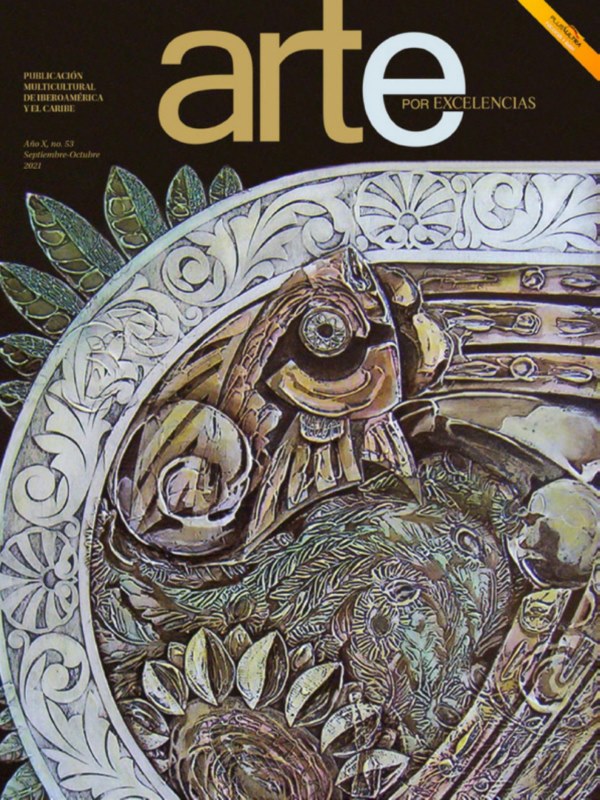The Museum of Fine Cuban Arts, located in the 13th district of Vienna, opened in November 2009 with the exhibition of a remarkable selection of Cuban art that embraced painting, sculpture and installations. Once the seat of the former Cuban Embassy in the Austrian country, over the last five years the building has been expanded and especially equipped with the latest technology in order to welcome this institution of sleek design and contemporary look, whose cost is valued at around four million euros.
This icon of visual culture displays a synopsis of the significant art repertoire of the island, which belongs to Mr. Maximilian Reiss, collector and president of an institution that holds a valuable and comprehensive thesaurus, which has been acquired over more than fifteen years, beginning with the purchase of a piece at the request of former Ambassador Alberto Velasco on the occasion of a Cuban artist’s personal exhibition held in that city. Since then Reiss began collecting works of art from this country, and has been a frequent client of Havana Auction and La Acacia Gallery; of artists and private collectors; as well as of other galleries around the world, mainly Spanish ones.
 To establish a facility of this nature outside of Cuba is a real novelty and a distinction. Its opening was a significant recognition to the work of its managers, protagonists and collaborators, and a challenge to their future roles as part of an important Cuban enclave within the European continent. The far-reaching work that they intend to unfold will result in a wide understanding of this Caribbean nation’s visual arts and will serve to promote and disseminate the most diverse fields of Cuban culture. Its geographical position will contribute to the dialogue and contemporary Cuban artists’ feedback from this Central European country’s rich culture, once they have exhibited in this institution conceived with an ample infrastructure that will ensure lodging and remarkable workshops to the guest artists.
To establish a facility of this nature outside of Cuba is a real novelty and a distinction. Its opening was a significant recognition to the work of its managers, protagonists and collaborators, and a challenge to their future roles as part of an important Cuban enclave within the European continent. The far-reaching work that they intend to unfold will result in a wide understanding of this Caribbean nation’s visual arts and will serve to promote and disseminate the most diverse fields of Cuban culture. Its geographical position will contribute to the dialogue and contemporary Cuban artists’ feedback from this Central European country’s rich culture, once they have exhibited in this institution conceived with an ample infrastructure that will ensure lodging and remarkable workshops to the guest artists.
This exceptional project counted with the collaboration of Havana’s Museo Nacional de Bellas Artes (MNBA) during the initial phases of reception, packaging and export of works, and later with the curatorship, restoration and montage of the pieces for their later exhibition in two of the sites intended for the opening.
The curatorial project focused on a broad comprehensive selection from the Museum’s broad thesaurus revealed in two areas: one devoted mainly to painting, the other to sculpture. The works displayed were created by an important group of artists from the twentieth-century art avant-garde all the way to creators of the most recent promotions. In the main room 28 paintings and drawings along with four sculptures and an installation could be appreciated, while in the first level hall eighteen sculptures were deployed, preceded by six niches that housed small format sculptural exponents.
The museological and museographical conception, on the other hand, was adapted to the conditions of the building and the emplacement at the front of the building of two sculptures of the authorship of Roberto Fernández and Agustín Cárdenas was considered in order to ensure the identity of the place. In the lobby the piece Meditación (Meditation) welcomed us, an elegant and sober monk figure radiating a surprising aura, created by Teodoro Ramos Blanco. The terrace sheltered six contemporary sculptures, four of them of large format.
The exhibition’s deployment begins with the first Cuban avant-garde, represented by three key works of Victor Manuel Garcia: an exponent of an American landscape together with a virtuous portrait, as well as a young couple on cardboard painted with the typical sharp and vigorous handling of his brushwork. Following are Jorge Arche, Fidelio Ponce and Eberto Escobedo. Within the tour of the second avant-garde pieces by Mariano Rodriguez, Carmelo Gonzalez and two works on paper by Wifredo Lam are the highlights. The Museum’s visitors can later enjoy the poetics of Adigio Benitez, Raul Martinez and Jose Mijares, to continue with Angel Acosta León, Antonia Eiriz, Umberto Peña and Servando Cabrera Moreno. As part of the more recent generations, from the seventies, Ever Fonseca, Manuel Mendive and Zaida del Rio; and from other promotions Flavio Garciandía, Jose Bedia and Alexis Leyva, Kcho.
The evolution of the sculptural nucleus is present in the show with paradigmatic works from authors such as Juan Jose Sicre, founder of modernism in Cuba, author of the giant statue of José Martí at the Revolution Square in Havana, and important monuments in North and South America; Teodoro Ramos Blanco, with a wide and diverse sculptural creations and major awards; Roberto Estopiñán, an example of international trends adapted to a personal style and Eugenio Rodriguez, sculptor, drawer and printmaker. Other highlights are Alfredo Lozano, of American will with his desire for simplicity, abstraction and monumentality; Armando Fernandez, professor of different levels at art schools in Havana both as a teacher and director alike, with an artistic performance in which humble and daily events cohabitate in clear harmony; and Fernando Boada, master of the three-dimensional portrait, especially monumental and funeral, whose legacy is found in public spaces in the Cuban territory and in foreign institutions.
 Special mention deserve Florencio Gelabert, with a style reminiscent of Art Nouveau and Expressionist stylization; Rita Longa, who created works of art full of grace and sensuality, where decorative alternates with realism in the diverse and complex labor that emphasizes the sensual, tactile and sublimation of forms; Manuel Rodulfo Tardo, in which the Mexican muralist movement left deep traces; Francisco Antigua, a member of the Eleven Group; Marta Arjona, remarkable ceramicist, sculptor and prominent intellectual; and Agustin Cardenas, distinguished by his work of direct carving on wood. Of this historical vanguard of Cuban art stands out, at last, Tomas Oliva, representative of abstraction.
Special mention deserve Florencio Gelabert, with a style reminiscent of Art Nouveau and Expressionist stylization; Rita Longa, who created works of art full of grace and sensuality, where decorative alternates with realism in the diverse and complex labor that emphasizes the sensual, tactile and sublimation of forms; Manuel Rodulfo Tardo, in which the Mexican muralist movement left deep traces; Francisco Antigua, a member of the Eleven Group; Marta Arjona, remarkable ceramicist, sculptor and prominent intellectual; and Agustin Cardenas, distinguished by his work of direct carving on wood. Of this historical vanguard of Cuban art stands out, at last, Tomas Oliva, representative of abstraction.
Exponents of the younger generations were added as well, such as: Jose Villa (Plastic Arts National Prize, Cuba, 2008),Thomas Lara, Rene Negrin, Juan Quintanilla, Eliseo Valdés, Rafael Consuegra, Aimee Garcia and again Kcho.
The opening of this institution in the heart of Europe completed a first phase of the job, since briefly other exhibition halls were set up for exhibitions by artists from the island. This cultural center should be totally incorporated to the classification of “museum”, as defined by UNESCO’s International Council of Museums: a permanent non-profit institution, in the service of society and its development, open to the public, that conducts research on humanity’s and its environment’s material testimonies, acquired, preserved, conveyed and exhibited for study, education and enjoyment. This conceptualization guarantees that these institutions be responsible for the preservation and dissemination of the cultural heritage and requires them to structure training proposals for the development of its functions in accordance to the administrative statute that generates and controls the development of its performance.
Such a singular space denotes, in the international arena, the presence and importance of the visual arts in this Caribbean country in its multiplicity and splendor, from the initial twentieth century avant-garde artists up to the most recent. Its opening was a privilege and marked the beginning of a broad movement for the promotion and diffusion of Cuban art beyond national borders.
Related Publications

How Harumi Yamaguchi invented the modern woman in Japan
March 16, 2022
Giovanni Duarte and an orchestra capable of everything
August 26, 2020











